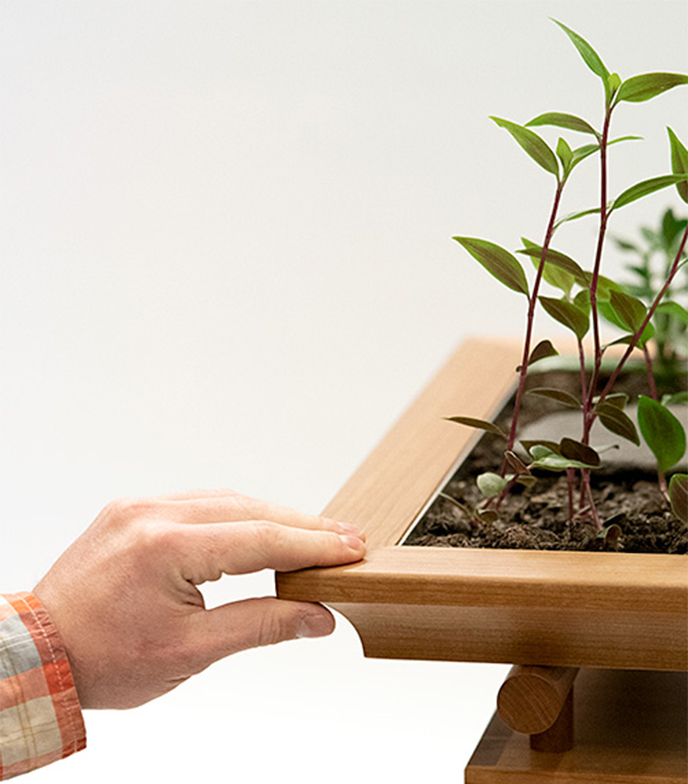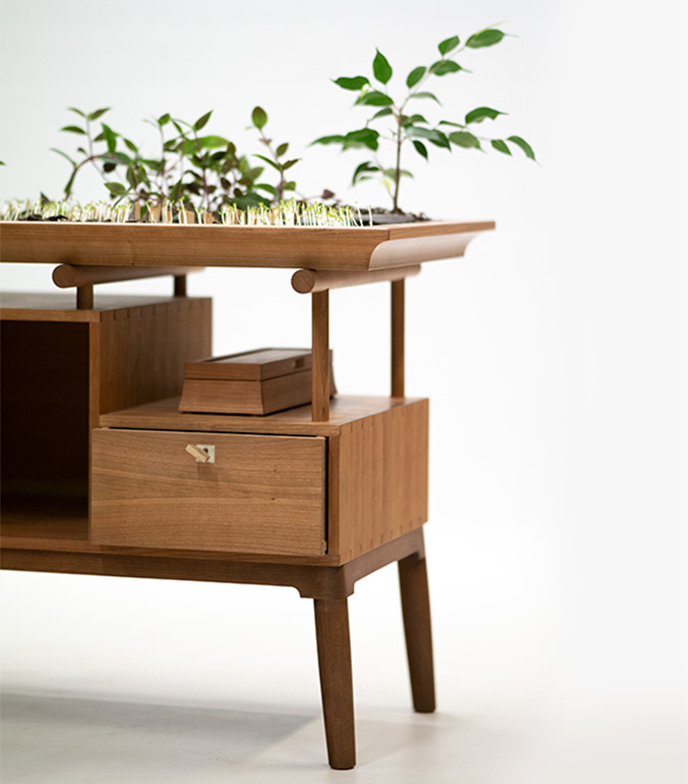Scholarship recipient of 2021: Rasmus Larsson
Inspired by traditional Japanese architecture, the journeyman examination piece of this year's Tormek Scholar, Rasmus Larsson, was borne of his longing to make nature an integral part of his work and both showcases his skill and his knack for creative solutions. We had a chat with Rasmus in his workshop back home in Kristianstad.
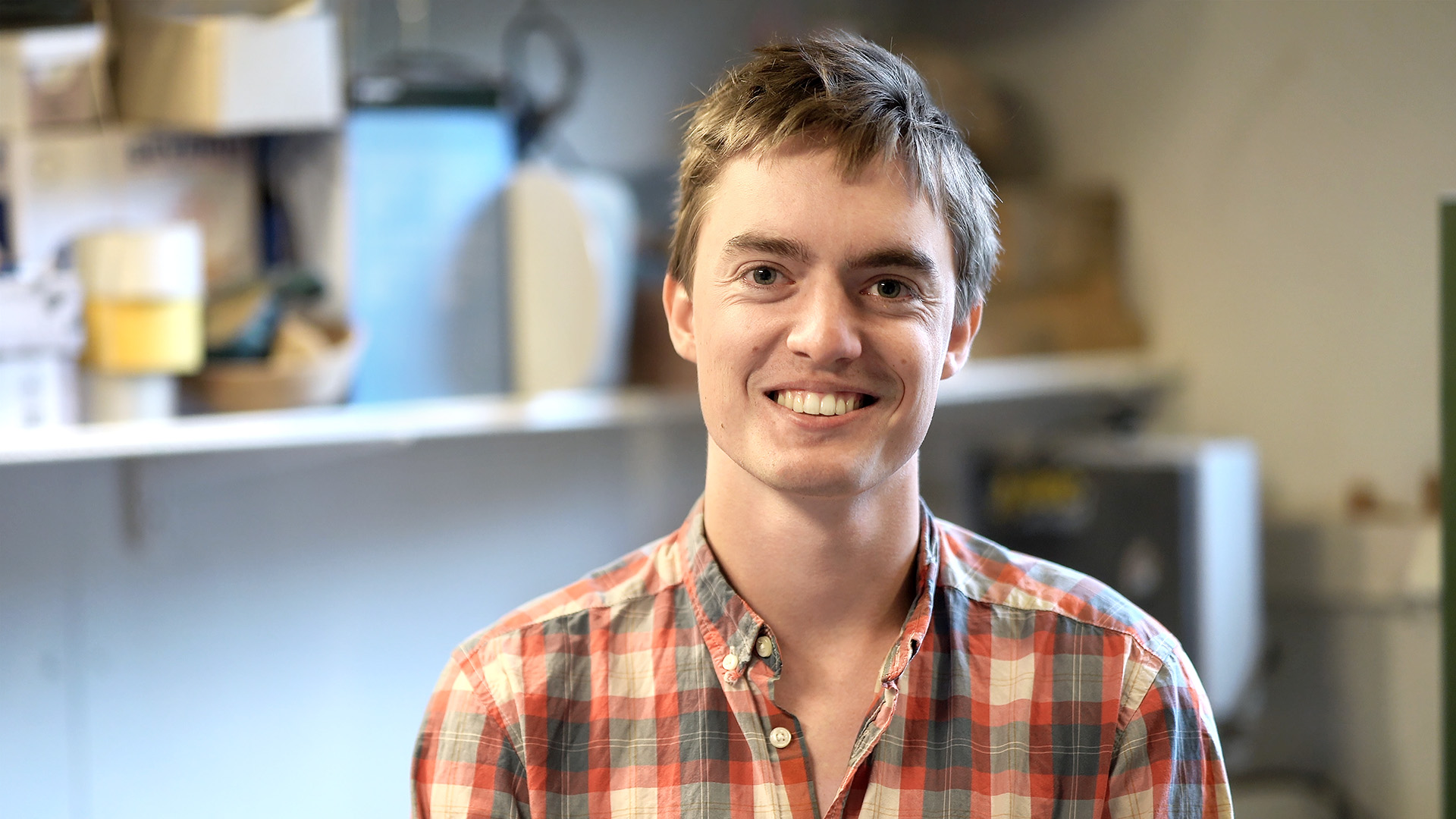
It was during the three years that he studied carpentry—most recently on Öland and at Capellagården—that Rasmus truly fell in love with hand tools. During that time, he came to understand just how important it is for blades to have impeccably sharp edges. His sideboard, which he created using a plethora of different tools and craft techniques, is the embodiment of that realisation.
Inspired by Japan
Both the piece's minimalist design and practical yet ingenious solutions reveal the source of Rasmus's inspiration. Traditional Japanese architecture often uses trees and vegetation to affect the way people will experience a space. Rasmus let that principle guide his work: the top of his sideboard features a sunk miniature garden with a clear Japanese touch. Small stepping stones form a trail that snakes its way through a little forest of plants.
Additional creative ideas complement the main idea of the miniature garden. Because plants can only grow and flourish with proper care, Rasmus incorporated an elegant box into his design, tailored to contain secateurs to prune the garden's plants with. Secateurs in turn can only make clean cuts when they are sharp as a knife—which is where Tormek's sharpening system comes into the picture.
"The piece I made is inspired by traditional Japanese architecture, and borne of my longing to make nature an integral part of my work. The result is this sideboard, which I tailor-embedded an aluminium dish in to cultivate a bonsai garden. In that sense, it's a piece of furniture that will never be finished: it will demand constant care and ever-sharpened tools," Rasmus wrote in his application.
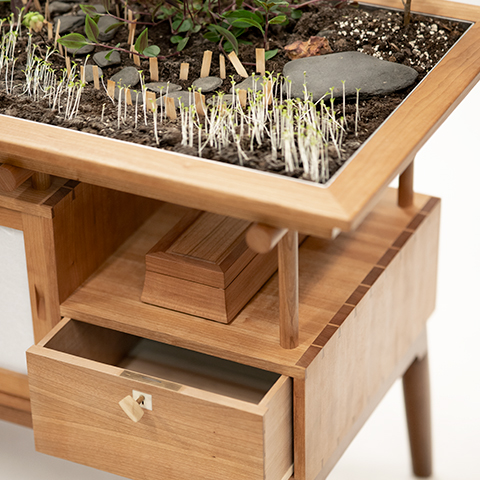
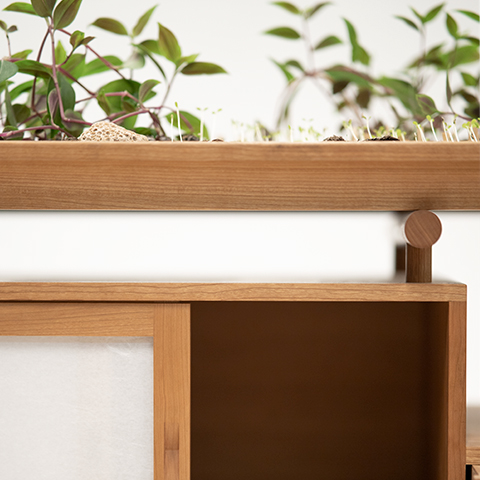
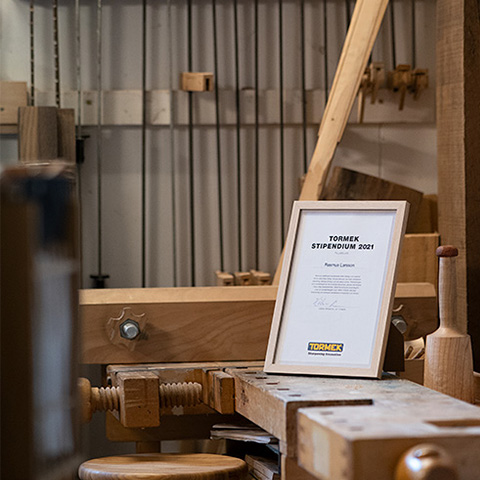
A carefully executed craft piece
Rasmus's execution leaves nothing to be desired. Pyllen, as he named his sideboard, consists of more than 60 woodwork joints, all cut and chiselled out by hand. "I consciously designed a piece that would require a traditional skillset, because I love using hand tools," Rasmus enthuses.
The Tormek Scholar first made a quick sketch on paper and then produced a prototype. Next, he hand-drew the entire object to size, to allow each detail to occupy the space it deserved. Once Rasmus had created a digital copy of the result, he could devote his attention to the actual carpentry work.
Looking at the final object, it is clear nothing was left to choice in terms of materials. Every single detail was selected with care. Rasmus mainly opted for solid cherry wood—both because it is one of his favourite woods to work with, and to emphasise the Japanese theme of the sideboard. He used washi paper for the two sliding doors, while the drawer's keyhole is made of tagua nut that matches the key itself. The brass shank of the latter, polished to a shine, is the jewel in the sideboard's crown.
Motivation given by the jury
"Rasmus's sideboard combines different woods and materials to create a piece of furniture that captures the essence of nature. Crafting it must have required detailed planning, perfectly sharpened tools and an alert mind. The way the individual elements were produced and mounted illustrates the maker's proficiency in a range of techniques. A bonsai garden brings to life this work of art, ensuring the piece is ever-changing and challenges the viewer's creativity and imagination."
